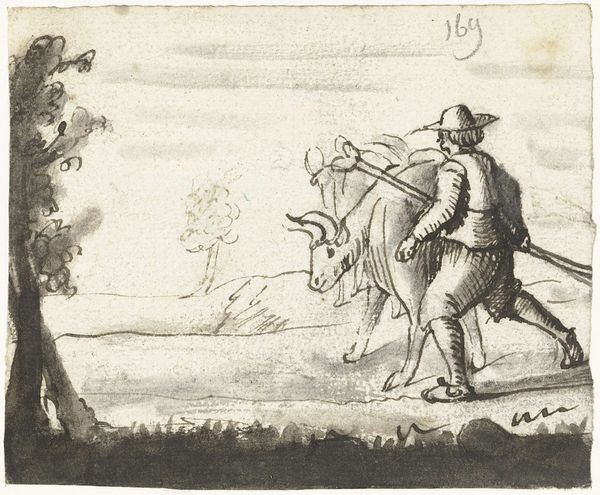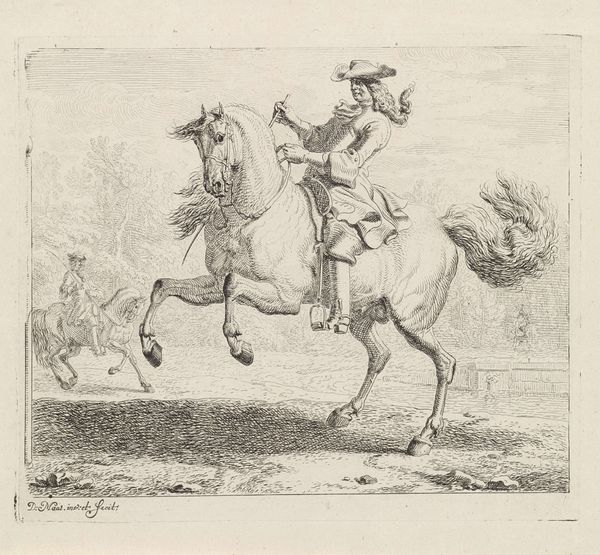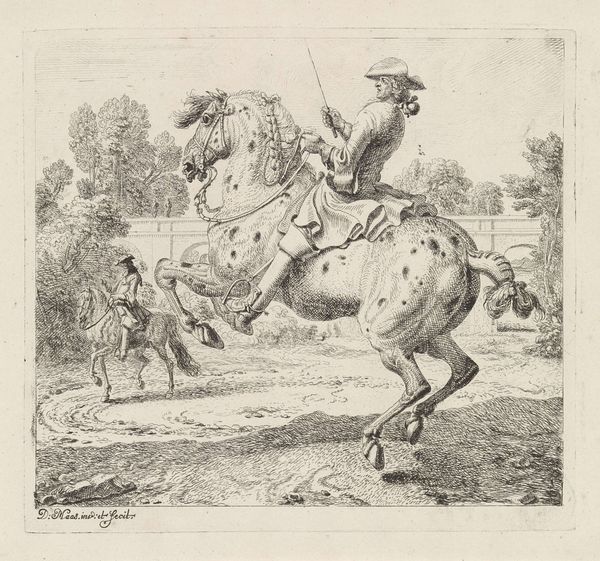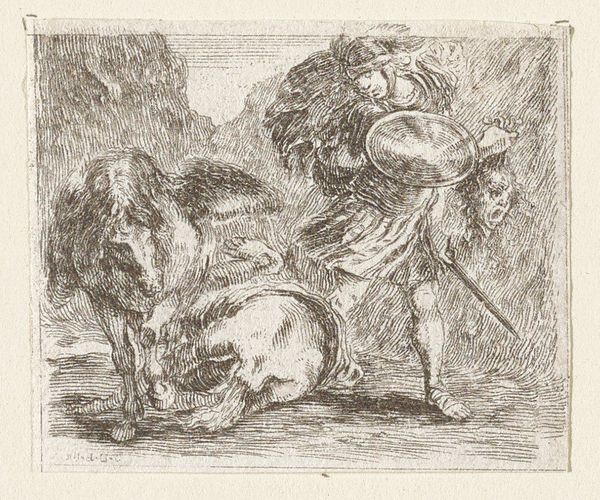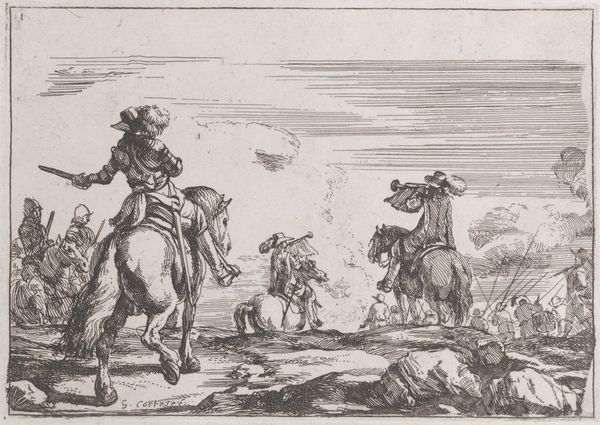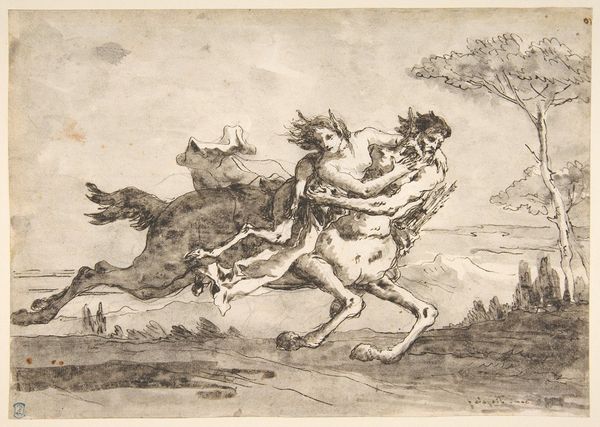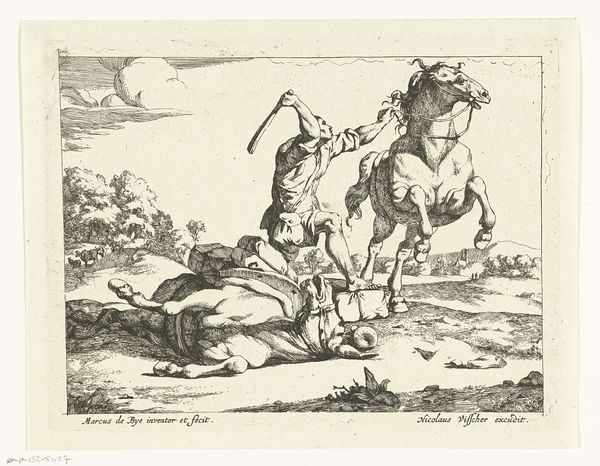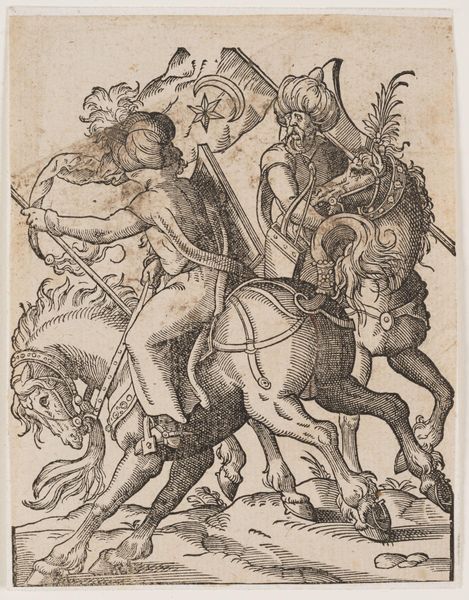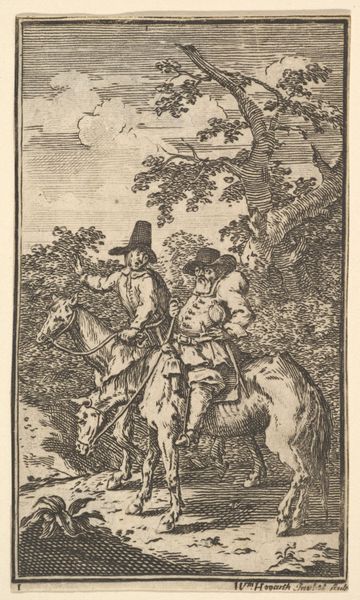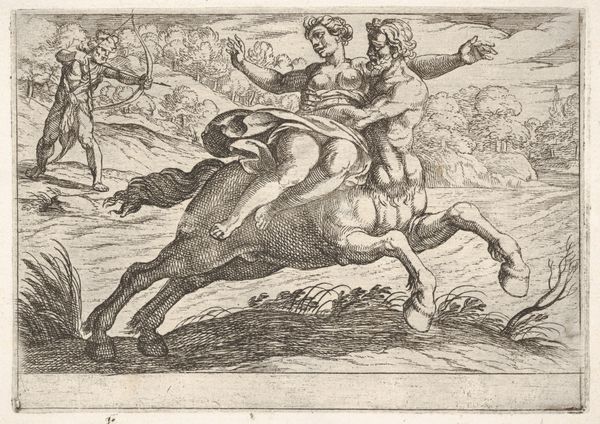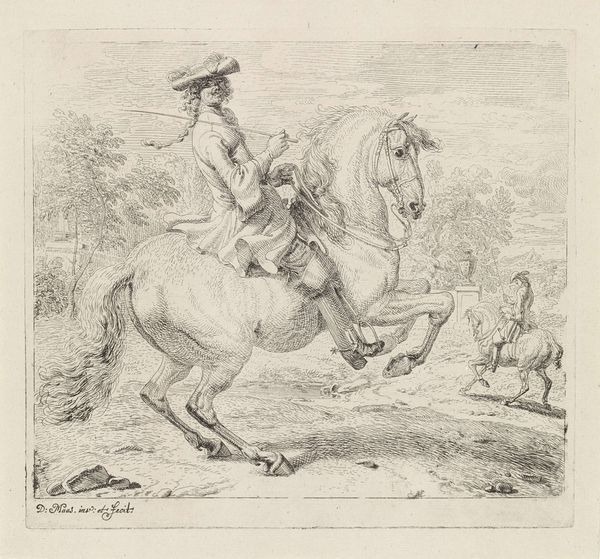
print, etching, engraving
#
portrait
#
baroque
# print
#
etching
#
landscape
#
figuration
#
horse
#
genre-painting
#
engraving
Dimensions: height 78 mm, width 125 mm
Copyright: Rijks Museum: Open Domain
Curator: What a whimsical piece! It almost has a storybook feel. Editor: Yes, there is a unique charm here. This is an engraving and etching by Jan Gerritsz Swelinck, created sometime between 1624 and 1645, titled "Man en vrouw te paard"—Man and woman on horseback. It’s a curious genre scene. Curator: Engraving and etching combined—I'm immediately interested in how the labor was divided, the specialization within Swelinck’s studio or network to produce this print. It looks like perhaps the engraving defines the broader landscape while the etching gives us the details of the figures' dress? Editor: A keen eye, as always! It is fascinating to consider the division of labor. And to build on your point about dress, these figures certainly convey a sense of status. How do you see this imagery reflecting broader social themes? Curator: Given the context, I think of sumptuary laws and how clothing signaled social rank during the Baroque period. What materials would have been used for these outfits? Were these domestically produced or imported textiles? The details here—the ruff, the trim on the man’s hat, the horse’s tack—all speak to specific production methods. Editor: Absolutely. We could dive deep into trade routes, craft guilds, and even the colonial undertones possibly present in the materials themselves. On a more direct representational level, the work offers a certain performance of gender. Notice how the woman is placed behind the man, one hand resting gently on him; he boldly gestures forward, taking the lead. The dynamic raises questions about societal roles. Curator: I find it particularly interesting how prints such as these served as reproducible commodities, contributing to the construction of social values through mass dissemination and consumption of this shared image. And, indeed, who had access to this image, and how would this accessibility have influenced contemporary taste and trends? Editor: Those are great points about distribution and impact! Examining the themes of identity and gender within historical landscapes, framed by labor, materiality, and consumption... it makes this piece more potent than perhaps Swelinck initially imagined. Curator: Indeed! It allows us to look more deeply into the past, present, and maybe even our collective future through new production practices. Editor: It is a rewarding intersection. One thing is for certain: there are narratives upon narratives contained within this small print.
Comments
No comments
Be the first to comment and join the conversation on the ultimate creative platform.
